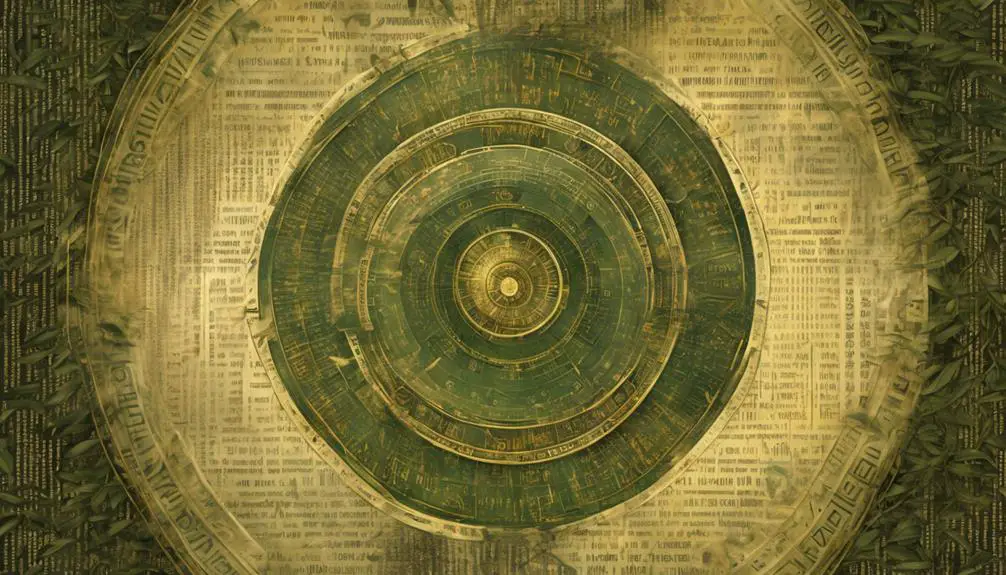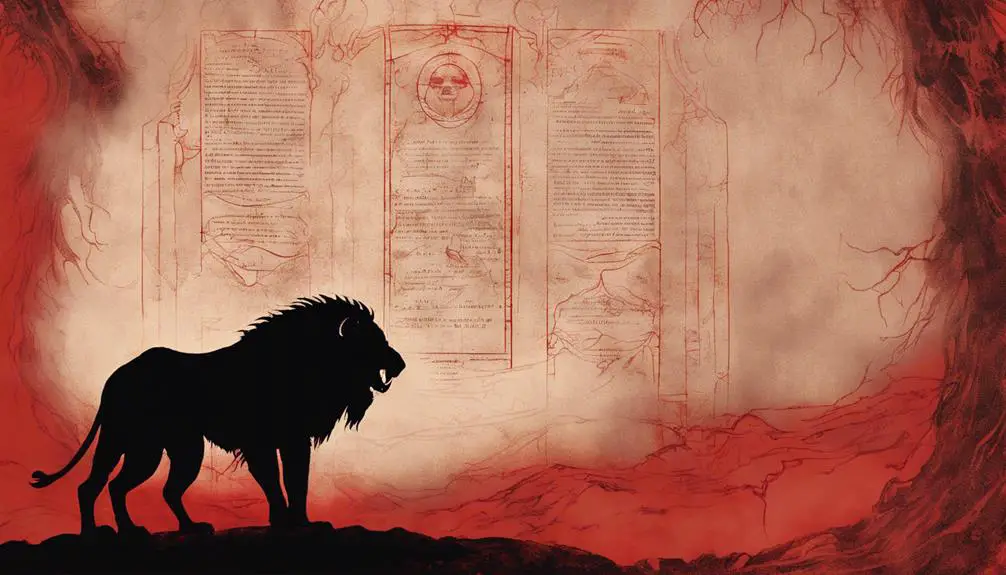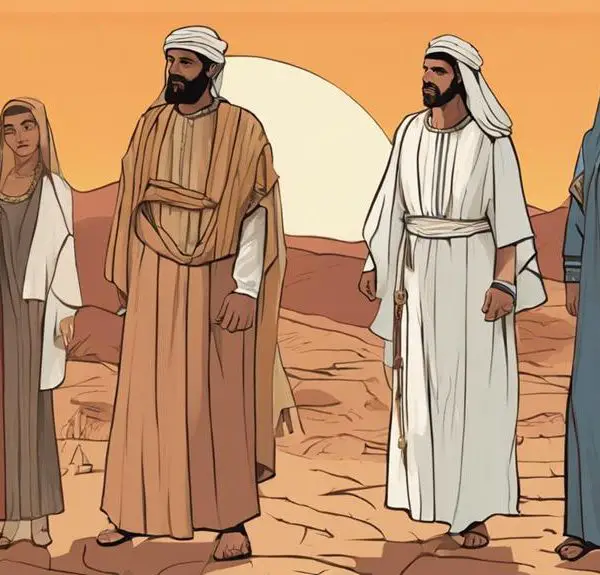Learn how the debate over microchips and biblical prophecies ignites discussions on faith, technology, and the future of humanity.

Microchips in the Bible
Just as the invention of the printing press revolutionized access to the Bible, today's digital age introduces new interpretations and fears, particularly around the concept of microchips.
You might find yourself intrigued by how ancient prophecies from texts like Revelation seem to intersect with modern technology, such as microchipping. These discussions often pivot around the idea of the Mark of the Beast, blending prophecy with contemporary concerns over privacy and autonomy.
As you explore this topic, consider how historical context and current technological advancements create a complex tapestry, inviting you to question where faith intersects with the future of humanity.
Key Takeaways
- Microchips fuel fears of control, mirroring Mark of the Beast interpretations as symbolic of socio-political allegiance.
- Technological advancements challenge reconciling ancient prophecies with modern devices like microchips.
- Concerns about microchips include privacy invasion and autonomy loss, echoing fears of a surveillance state.
- Interpretations of Revelation evolve, with some viewing microchips as a contemporary allegory for the Mark of the Beast.
The Mark of the Beast

Many scholars interpret the 'Mark of the Beast,' as described in the Book of Revelation, to symbolize ultimate allegiance to oppressive systems, rather than a literal microchip implantation. Delving into the historical context, it's essential to understand that the Book of Revelation, a text enveloped in rich symbolism and metaphor, was written in a time of significant political and religious upheaval. The symbolic meanings, therefore, often reflect the struggles and persecutions faced by early Christians under Roman rule.
This perspective suggests that the 'Mark of the Beast' represents a form of socio-political and economic allegiance to the Roman Empire, which demanded loyalty and worship of its emperor—a direct affront to the Christian faith. The mark, in this view, isn't a physical brand but a metaphor for the moral and ethical compromises Christians had to navigate to survive within an oppressive state. This interpretation encourages readers to look beyond the surface and consider the broader implications of compliance and resistance within unjust systems, highlighting the enduring relevance of these themes throughout history.
Prophecy and Modern Technology

While historical interpretations of the 'Mark of the Beast' focus on allegiances to oppressive systems, it's crucial to explore how prophecies may interact with the advancements in modern technology. The concept of Technological Determinism suggests that technology itself can influence and shape societal structures and cultural values. Hence, examining the intersection of biblical prophecies and technological progress is not only fascinating but necessary.
Technological Advancement |
Relation to Apocalyptic Symbolism |
|---|---|
Microchip Implants |
Fuels fears of a literal 'mark' controlling access to societal participation |
Artificial Intelligence |
Raises concerns about the loss of human autonomy and the rise of a 'beast-like' system |
Global Surveillance |
Mirrors prophetic warnings about omnipresent oversight and control |
Digital Currency |
Seen as a precursor to economic systems that exclude those without the 'mark' |
This analysis underscores the importance of understanding how apocalyptic symbolism can be reinterpreted in light of current technological trends. It invites you to reflect on the broader implications of these innovations, not just in fulfilling prophecy but in shaping the ethical boundaries of society.
Revelation's Digital Interpretations

In the digital age, interpretations of Revelation increasingly consider the role of technology in fulfilling apocalyptic prophecies. This shift has led to viewing the ancient text through a lens of technological allegory, presenting unique interpretative challenges. Scholars and theologians are now analyzing scripture not just in spiritual or metaphorical terms but as potential forewarnings of technological advancements and their ethical implications.
Consider the imagery these interpretations conjure:
- The Mark of the Beast: Once thought of purely as a symbol of allegiance, now speculated to be akin to microchip implants or digital IDs, tracking every aspect of life.
- The False Prophet's Miracles: Previously understood as supernatural acts, these are now discussed as possible manifestations of advanced artificial intelligence and holographic technology, deceiving many.
- Babylon the Great's Fall: This event, symbolizing the collapse of a morally corrupt system, is likened to the potential downfall of a digitally interconnected society, vulnerable to cyber-attacks or a catastrophic data breach.
These interpretations highlight the challenges of reconciling ancient prophecies with modern realities. They demand a nuanced understanding of the text, where technological advancements serve as both a lens and a mirror, reflecting our contemporary anxieties and hopes back at us.
Microchips: Fear Vs. Faith

The debate surrounding microchips, oscillating between fear and faith, reveals deep-seated concerns about privacy, autonomy, and prophetic fulfillment. You're navigating a terrain where the promise of technological salvation clashes with the fear of losing one's essence to a digital overseer. This dichotomy isn't merely speculative; it roots itself in tangible privacy implications and the broader discourse on human dignity.
Aspect |
Fear |
Faith |
|---|---|---|
Control |
Fear of surveillance and loss of autonomy. |
Faith in enhanced security and convenience. |
Privacy |
Concerns over data breaches and tracking. |
Belief in robust privacy protections. |
Identity |
Anxiety about dehumanization. |
Optimism for a new form of identity safety. |
Autonomy |
Worry over external control of personal choices. |
Trust in personal empowerment through technology. |
Prophetic |
Fear of fulfilling dystopian prophecies. |
Faith in divine guidance over technological evolution. |
Analyzing this table, you discern how the microchip debate isn't a binary argument but a spectrum where technological salvation and privacy implications coexist. You're urged to consider how your beliefs align with these concerns, recognizing that the path forward requires a nuanced understanding of both fear and faith.
Navigating End Times Narratives

Delving into end times narratives, you encounter a complex web of interpretations that challenge both spiritual and technological perspectives. To navigate these narratives effectively, it's essential to ground your understanding in historical context and eschatological symbolism. This approach not only enriches your comprehension but also enables you to discern between metaphorical language and literal prophecies.
To create imagery in the audience's mind, consider the following:
- Ancient Ruins: Reflecting on historical context, imagine walking through ancient ruins, where inscriptions and artifacts whisper secrets of past civilizations. These remnants provide crucial insights into understanding prophetic texts within their original milieu.
- Stained Glass Windows: Envision eschatological symbolism as intricate stained glass windows in a grand cathedral. Each panel represents a complex blend of colors and shapes, telling stories that transcend literal interpretation, guiding us toward deeper spiritual truths.
- Digital Age Landscapes: Picture the intersection of technology and prophecy as a futuristic cityscape, where skyscrapers of data and networks of information highways represent the modern context in which ancient prophecies are interpreted.
Analyzing end times narratives requires a balanced perspective that appreciates the richness of symbolic language while considering the implications of contemporary technological advancements.
Frequently Asked Questions
How Do Different Religious Denominations Interpret the Concept of Microchips in the Context of Biblical Prophecy?
When you explore how various religious groups interpret technological advancements, you delve into a realm where implant symbolism and interpretation diversity come to the forefront.
Each denomination views the concept of microchips through its unique lens, often drawing on biblical prophecy to frame their understanding.
This analysis uncovers a spectrum of beliefs, from seeing microchips as fulfilling ancient scriptures to interpreting them as mere tools, devoid of prophetic significance.
What Historical Precedents Exist for Interpreting Technological Advances as Signs of the End Times, Besides Microchips?
You'll find that throughout history, many technological advances have been viewed through the lens of end times prophecies. This isn't new.
Historical allegories abound with instances of technological skepticism, where innovations sparked fear and speculation about apocalyptic outcomes.
From the printing press to the internet, each has been interpreted by some as harbingers of doom, reflecting a consistent pattern of apprehension toward the unknown that predates the modern conversation about microchips.
How Do Non-Christian Religions and Secular Perspectives View the Association Between Microchips and Biblical Prophecies?
You'll find that non-Christian religions and secular viewpoints often approach the topic of technological advancements, like microchips, with skepticism rather than linking them to prophecies.
Through interfaith dialogue, you'll learn that many see these innovations as purely scientific progress or societal evolution, not signs of apocalyptic events.
This perspective highlights the importance of understanding diverse beliefs and the impact of technological skepticism in shaping responses to new technologies.
What Are the Ethical Considerations in Using Scripture to Argue for or Against the Adoption of Microchip Technology?
When you delve into the intersection of technology ethics and scriptural literalism, you're navigating a delicate dance between innovation and tradition.
Arguing for or against microchip technology using scripture requires a nuanced understanding of ethical considerations.
It's essential to balance respect for religious beliefs with the practical implications of technological advancements.
This approach avoids oversimplification and acknowledges the complexity of integrating modern technology with ancient wisdom, ensuring a thoughtful, inclusive discourse.
How Has the Discussion Around Microchips and the Bible Influenced Legislative or Policy Decisions Globally?
When examining how microchips have influenced global legislation or policy, you'll find privacy concerns and fears of global surveillance at the core. These technologies, while promising for security and convenience, have sparked debates about personal freedoms.
Governments worldwide have had to balance technological advancement with ethical considerations, leading to varied responses. Some countries have embraced these technologies cautiously, implementing strict regulations to safeguard against potential abuses and ensure citizens' rights are protected.
Conclusion
In conclusion, as you've journeyed through the labyrinth of prophecies and technology, it's clear that interpreting the Mark of the Beast in the context of modern microchips is like trying to fit a square peg in a round hole.
This exploration reveals a delicate balance between fear and faith, urging a scholarly approach to navigating end times narratives.
Ultimately, discerning Revelation's digital interpretations requires not just wisdom, but a leap of faith large enough to span the Grand Canyon.



Sign up